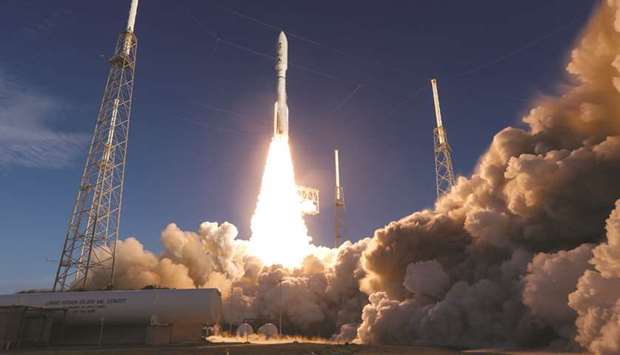Nasa’s latest Mars rover Perseverance yesterday launched on an astrobiology mission to look for signs of ancient microbial life on the Red Planet — and to fly a helicopter-drone on another world for the first time.
A United Launch Alliance Atlas V rocket took off on schedule at 7.50am (1150GMT) from Cape Canaveral, Florida, and the first stage separated minutes later.
About an hour after launch, the spaceship carrying Perseverance to Mars broke away from the upper-stage Centaur rocket.
If all goes to plan, Perseverance will reach Mars on February 18, 2021, becoming the fifth rover to complete the voyage since 1997.
So far, all have been American.
China launched its first Mars rover last week, which should arrive by May 2021.
By next year, Mars could have three active rovers, including Nasa’s Curiosity, which has traversed 23kms of the Martian surface since it landed in 2012.
Yesterday’s launch also took place despite a raging coronavirus pandemic, which has hit the US harder than any country.
Nasa chief Jim Bridenstine said the pandemic made it even more important that mission went ahead as planned.
“We have a history of doing amazing things in the most challenging times, and this is this is no different,” he said, shortly before take-off.
Perseverance is an improved version of Curiosity — faster, smarter, and capable of autonomously navigating 200 metres per day.
About the size of a small SUV, it weighs a metric ton, has 19 cameras and two microphones — which scientists hope will be the first to record sound on Mars.
It has a two-metre-long robotic arm, and is powered by a small nuclear battery.
Once on the surface, Nasa will deploy the Ingenuity Mars Helicopter — a small 1.8kg aircraft that will attempt to fly in an atmosphere that is only 1% the density of Earth’s.
The idea is to lay down a proof of concept that could one day revolutionise planetary exploration, since rovers can only cover a few dozen kilometres in their whole lifespans and are vulnerable to sand dunes and other obstacles.
Another goal is to help pave the way for future human missions — and a major obstacle is planet’s 96% carbon dioxide atmosphere.
Liquid oxygen can be brought from Earth, or oxygen can be mined from ice underneath the Martian surface.
A simpler approach is converting it from the atmosphere, which is what the Mars Oxygen In-Situ Resource Utilisation Experiment, or MOXIE can do, using a process called electrolysis.
The plan is to perform at least 10 oxygen-producing runs using the car-battery sized device throughout the mission under as many different seasonal and environmental conditions as possible.
But Perseverance’s primary mission is to scour the planet for evidence of ancient life forms.

A United Launch Alliance Atlas V rocket carrying Nasa’s Mars 2020 Perseverance Rover vehicle lifts off from the Cape Canaveral Air Force Station in Cape Canaveral, Florida, US, yesterday.
